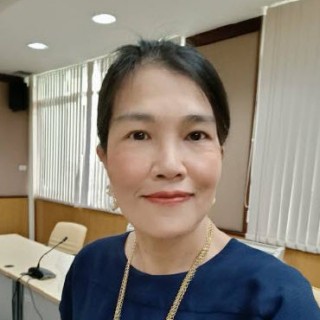หลักสูตร การจัดการการจัดซื้อแบบลีนที่มีประสิทธิภาพ (Effective lean procurement management)
รหัสหลักสูตร: 66903
-
ยังไม่มีรอบจัดในขณะนี้
ท่านสามารถลงทะเบียนล่วงหน้าเพื่อรับการแจ้งเตือนเมื่อมีรอบใหม่
หลัการและเหตุผล
การจัดการการจัดซื้อแบบลีนเป็นกระบวนการของการดำเนินการและการรักษากลยุทธ์การจัดซื้อแบบลีนภายในองค์กร สิ่งนี้เกี่ยวข้องกับการระบุและกำจัดของเสียในกระบวนการจัดซื้อและปรับปรุงประสิทธิภาพและประสิทธิผลอย่างต่อเนื่อง ในการจัดการการจัดซื้อแบบลีนอย่างมีประสิทธิภาพองค์กรมักจะใช้เครื่องมือและเทคนิคต่างๆ เช่น การทำแผนที่สายธารคุณค่าระบบคัมบังระบบดึงข้อมูล และการปรับปรุงอย่างต่อเนื่อง นอกจากนี้ยังอาจใช้กระบวนการและขั้นตอนที่เป็นมาตรฐาน และทำงานเพื่อสร้างความสัมพันธ์ที่แน่นแฟ้นและทำงานร่วมกันกับซัพพลายเออร์ การจัดการการจัดซื้อแบบลีนที่มีประสิทธิภาพนั้นต้องการวัฒนธรรมของการปรับปรุงอย่างต่อเนื่องและความเป็นผู้นำที่มุ่งมั่นที่จะขับเคลื่อนการเปลี่ยนแปลงและให้อำนาจแก่พนักงานในการระบุและกำจัดความสูญเปล่านอกจากนี้ยังต้องให้ความสำคัญกับคุณค่าของลูกค้าเนื่องจากเป้าหมายของการจัดซื้อแบบลีนคือการให้คุณค่าแก่ลูกค้าโดยการปรับปรุงกระบวนการจัดซื้อให้คล่องตัวและลดปริมาณของเสีย โดยรวมแล้วการจัดการการจัดซื้อแบบลีนนั้นเกี่ยวกับการปรับกระบวนการจัดซื้อให้เหมาะสมเพื่อลดของเสียและเพิ่มประสิทธิภาพ ในขณะเดียวกันก็มอบคุณค่าให้กับลูกค้าและปรับปรุงประสิทธิผลขององค์กร ฝ่ายจัดซื้อถูกคาดหวังจากองค์กรว่าต้องเป็นหน่อยงานที่ช่วยสนับสนุนองค์กรในด้านการัดซื้อจัดหาสินค้าและบริการ เพื่อใช้งานในองค์กรไม่อย่างประหยัดได้คุณภาพและปริมาณครบถ้วนทันท่วงทีตามความต้องการของการใช้งานภายในองค์กร ซึ่งทุกครั้งดูเหมือนแต่จะมีแต่ความเร่งด่วนไร้แบบแผน แล้วฝ่ายจัดซื้อจะจัดกระบวนทัพรับมือกับสิ่งเหล่านี้ได้อย่างไร หลักสูตรนี้จะเป็นแนวทางและเป็นคำตอบสุดท้ายแต่นักจัดซื้อและผู้บริหารงานจัดซื้อได้นำไปใช้ให้ได้ประโยชน์สูงสุดต่อองค์กร•เป้าหมายหลักของ LEAN in Procurement (The main goal of lean procurement)
•แนวทางการขจัดตัวถ่วงในวัฏจักรการจัดซื้อจัดหา (LEAN in procurement life cycle)
oLEAN ในการระบุความต้องการ
oLEAN ในการเลือกซัพพลายเออร์
oLEAN ในการออกใบสั่งซื้อ
oLEAN การรับและการตรวจสอบ
oLEAN ในขั้นตอนการชำระเงิน
oLEAN ในการใช้สินค้าและการยกเลิก
•ประยุกต์การสูญเปล่าทั้ง 8 ในเพื่อวิเคราะห์ LEAN in Procurement ( Applying 8 Wastes to analysis the LEAN in procurement)
•ขจัดขั้นตอนแห่งความสูญเปล่าใน Procurement Process (Eliminate waste in procurement process)
•เพิ่มประสิทธิภาพแบบลีนในการจัดซื้อจัดจ้างด้วยเทคนิคหลากหลาย (Enhance the lean benefit in procurement with many techniques)
1. แนวคิดของ Lean
2. ขอบข่าย Purchasing, Procurement, P&S Management
3. ความจำเป็นและประโยชน์ของ Lean Procurement
4. ตัวอย่างของการทำให้ระบบจัดซื้อจัดจ้างมีความ Lean
5. หลักคิดในการวิเคราะห์ว่าอะไรคือสิ่งที่ “ไม่ Lean”
6. วิเคราะห์ความ “ไม่ Lean” ในระบบการจัดซื้อจัดจ้างทั่วไป
7. ในวงจรการจัดซื้อจัดจ้างมีกิจกรรมใดบ้างที่ไม่เกิดประโยชน์ต่อลูกค้า
8. วิเคราะห์กิจกรรมที่แม้ไม่เกิดประโยชน์ต่อลูกค้าแต่เป็นกิจกรรมที่จำเป็นต้องมี
9. วิเคราะห์ความ “ไม่ Lean” ในวงจรจัดซื้อจัดจ้างตั้งแต่ PR ถึง PO, PRถึงGR, PR ถึง Payment
10. วิเคราะห์ความ “ไม่ Lean” โดยใช้ข้อคิดจากความสูญเสีย 7 ประการ
11. ข้อคิดในการใช้ ABC Analysis เพื่อเพิ่มความ Lean ให้ระบบจัดซื้อจัดจ้าง
12. ข้อคิดจาก Supply positioning เพื่อเพิ่มความ Lean ให้ระบบจัดซื้อจัดจ้าง
13. วิธีรับมือกับงานด่วนในการจัดซื้อว่าจ้างอย่างมีประสิทธิภาพ
14. จัด Workshop อย่างไรในบริษัทของท่านเพื่อหาและขจัด waste ในกระบวนการ และนำไปสู่ Lean Procurement
1)The Benefits of Lean Procurement
2)How to Apply Lean in Procurement
- การจัดซื้อแบบลีนเป็นกลยุทธ์การจัดซื้อที่มีจุดมุ่งหมายเพื่อกำจัดของเสียและเพิ่มประสิทธิภาพในกระบวนการจัดซื้อจัดจ้างมันขึ้นอยู่กับหลักการของการผลิตแบบลีนซึ่งพัฒนาโดยโตโยต้าในช่วงกลางศตวรรษที่ 20 เพื่อปรับปรุงการผลิตและกำจัดของเสียเป้าหมายหลักของการจัดซื้อแบบลีนคือการให้คุณค่าแก่ลูกค้าโดยการปรับปรุงกระบวนการจัดซื้อจัดจ้างและลดของเสีย สิ่งนี้ทำได้โดยการระบุและกำจัดกิจกรรมที่ไม่เพิ่มมูลค่า เช่นงานเอกสารที่ไม่จำเป็นและระบบราชการ และเน้นไปที่กิจกรรมที่สนับสนุนความต้องการของลูกค้าโดยตรง ในการใช้กลยุทธ์การจัดซื้อแบบลีน องค์กรมักจะใช้เครื่องมือต่างๆ เช่นการทำแผนที่ สายธารคุณค่าระบบคัมบัง และระบบดึงเพื่อระบุและกำจัดของเสียลดเวลาในการผลิตและเพิ่มประสิทธิภาพการจัดซื้อแบบลีนยังเน้นถึงความสำคัญของการสร้างความสัมพันธ์ที่แน่นแฟ้นกับซัพพลายเออร์และการทำงานร่วมกันเพื่อเพิ่มประสิทธิภาพห่วงโซ่อุปทานทั้งหมด โดยรวมแล้วการจัดซื้อแบบลีนมีจุดมุ่งหมายเพื่อให้คุณค่าแก่ลูกค้าโดยปรับปรุงกระบวนการจัดซื้อจัดจ้างและลดของเสียขณะเดียวกันก็ปรับปรุงประสิทธิภาพและประสิทธิผลขององค์กรด้วย
Lean procurement is a procurement strategy that aims to eliminate waste and increase efficiency in the procurement process. It is based on the principles of lean manufacturing, which were developed by Toyota in the mid-20th century to streamline production and eliminate waste.
The main goal of lean procurement is to provide value to the customer by streamlining the procurement process and reducing waste. This is achieved by identifying and eliminating non-value adding activities, such as unnecessary paperwork and bureaucracy, and focusing on activities that directly contribute to the customer's needs.
To implement a lean procurement strategy, organizations typically use tools such as value stream mapping, kanban systems, and pull systems to identify and eliminate waste, reduce lead times, and increase efficiency. Lean procurement also emphasizes the importance of building strong relationships with suppliers and working collaboratively to optimize the entire supply chain.
Overall, lean procurement aims to provide value to the customer by streamlining the procurement process and reducing waste, while also improving the efficiency and effectiveness of the organization.
- มีหัวข้อสำคัญหลายหัวข้อที่โดยทั่วไปจะกล่าวถึงในการจัดซื้อแบบลีน ได้แก่:
การทำแผนที่สายธารคุณค่า:เป็นเครื่องมือที่ใช้ในการระบุและกำจัดความสูญเปล่าในกระบวนการจัดซื้อจัดจ้าง โดยการทำแผนที่การไหลของวัสดุข้อมูลและกิจกรรมจากซัพพลายเออร์ไปยังลูกค้า
ระบบคัมบัง:ระบบเหล่านี้เป็นระบบแบบดึงที่ช่วยให้องค์กรจัดการสินค้าคงคลังและระดับการผลิตแบบเรียลไทม์ ลดของเสียและปรับปรุงประสิทธิภาพ
ระบบดึง:เป็นระบบที่ช่วยให้องค์กรผลิตและซื้อเฉพาะสิ่งที่จำเป็นเมื่อจำเป็นเท่านั้น ลดของเสียและปรับปรุงประสิทธิภาพ
การจัดการความสัมพันธ์กับซัพพลายเออร์:การจัดซื้อแบบลีนเน้นถึงความสำคัญของการสร้างความสัมพันธ์ที่แน่นแฟ้นและการทำงานร่วมกันกับซัพพลายเออร์เพื่อเพิ่มประสิทธิภาพห่วงโซ่อุปทานทั้งหมด
การปรับปรุงอย่างต่อเนื่อง:การจัดซื้อแบบลีนเป็นกระบวนการต่อเนื่องในการระบุและกำจัดของเสียและปรับปรุงประสิทธิภาพเน้นความสำคัญของการปรับปรุงอย่างต่อเนื่องและการเรียนรู้จากประสบการณ์ที่ผ่านมาเพื่อขับเคลื่อนความก้าวหน้าอย่างต่อเนื่อง
การกำหนดมาตรฐาน:การจัดซื้อแบบลีนส่งเสริมการใช้กระบวนการและขั้นตอนที่ได้มาตรฐานเพื่อลดของเสียและปรับปรุงประสิทธิภาพ
ความเป็นผู้นำแบบลีน:การจัดซื้อแบบลีนต้องการวัฒนธรรมของการปรับปรุงอย่างต่อเนื่องและความเป็นผู้นำที่มุ่งมั่นที่จะขับเคลื่อนการเปลี่ยนแปลงและให้อำนาจแก่พนักงานในการระบุและกำจัดความสูญเปล่า
เครื่องมือและเทคนิคแบบลีน:มีเครื่องมือและเทคนิคต่างๆ มากมายที่องค์กรสามารถใช้เพื่อใช้กลยุทธ์การจัดซื้อแบบลีน เช่น การแมปสายธารแห่งคุณค่า ระบบคัมบัง ระบบดึง และงานที่เป็นมาตรฐาน
There are several key topics that are typically covered in lean procurement, including:
Value stream mapping: This is a tool used to identify and eliminate waste in the procurement process by mapping out the flow of materials, information, and activities from suppliers to customers.
Kanban systems: These are pull-based systems that allow organizations to manage their inventory and production levels in real-time, reducing waste and improving efficiency.
Pull systems: These are systems that allow organizations to only produce and purchase what is needed, when it is needed, reducing waste and improving efficiency.
Supplier relationship management: Lean procurement emphasizes the importance of building strong, collaborative relationships with suppliers to optimize the entire supply chain.
Continuous improvement: Lean procurement is an ongoing process of identifying and eliminating waste and improving efficiency. It emphasizes the importance of continuous improvement and learning from past experiences to drive ongoing progress.
Standardization: Lean procurement promotes the use of standardized processes and procedures to reduce waste and improve efficiency.
Lean leadership: Lean procurement requires a culture of continuous improvement and leadership that is committed to driving change and empowering employees to identify and eliminate waste.
Lean tools and techniques: There are many different tools and techniques that organizations can use to implement a lean procurement strategy, such as value stream mapping, kanban systems, pull systems, and standardized work.
Lean tools
There are many different tools and techniques that organizations can use to implement a lean procurement strategy. Some of the most common lean tools and techniques include:
Value stream mapping: This is a tool used to identify and eliminate waste in the procurement process by mapping out the flow of materials, information, and activities from suppliers to customers.
Kanban systems: These are pull-based systems that allow organizations to manage their inventory and production levels in real-time, reducing waste and improving efficiency.
Pull systems: These are systems that allow organizations to only produce and purchase what is needed, when it is needed, reducing waste and improving efficiency.
Standardized work: This involves establishing clear, standardized procedures and processes for procurement activities to reduce waste and improve efficiency.
Continuous improvement: Lean procurement is an ongoing process of identifying and eliminating waste and improving efficiency. It emphasizes the importance of continuous improvement and learning from past experiences to drive ongoing progress.
Six Sigma: This is a methodology for identifying and eliminating defects and variability in processes to improve efficiency and effectiveness.
5S: This is a system for organizing and maintaining a clean, organized, and efficient work environment through the use of five principles: sort, set in order, shine, standardize, and sustain.
Poka-yoke: This is a technique for preventing mistakes and errors in processes by designing systems that make it difficult or impossible for mistakes to occur.
Overall, these tools and techniques are designed to help organizations identify and eliminate waste, reduce lead times, and improve efficiency in the procurement process.
- การจัดการการจัดซื้อแบบลีนเป็นกระบวนการของการดำเนินการและการรักษากลยุทธ์การจัดซื้อแบบลีนภายในองค์กร สิ่งนี้เกี่ยวข้องกับการระบุและกำจัดของเสียในกระบวนการจัดซื้อและปรับปรุงประสิทธิภาพและประสิทธิผลอย่างต่อเนื่อง ในการจัดการการจัดซื้อแบบลีนอย่างมีประสิทธิภาพองค์กรมักจะใช้เครื่องมือและเทคนิคต่างๆ เช่นการทำแผนที่สายธารคุณค่าระบบคัมบังระบบดึงข้อมูลและการปรับปรุงอย่างต่อเนื่องนอกจากนี้ยังอาจใช้กระบวนการและขั้นตอนที่เป็นมาตรฐานและทำงานเพื่อสร้างความสัมพันธ์ที่แน่นแฟ้นและทำงานร่วมกันกับซัพพลายเออร์ การจัดการการจัดซื้อแบบลีนที่มีประสิทธิภาพนั้นต้องการวัฒนธรรมของการปรับปรุงอย่างต่อเนื่องและความเป็นผู้นำที่มุ่งมั่นที่จะขับเคลื่อนการเปลี่ยนแปลงและให้อำนาจแก่พนักงานในการระบุและกำจัดความสูญเปล่า นอกจากนี้ยังต้องให้ความสำคัญกับคุณค่าของลูกค้า เนื่องจากเป้าหมายของการจัดซื้อแบบลีนคือการให้คุณค่าแก่ลูกค้าโดยการปรับปรุงกระบวนการจัดซื้อให้คล่องตัวและลดปริมาณของเสีย โดยรวมแล้วการจัดการการจัดซื้อแบบลีนนั้นเกี่ยวกับการปรับกระบวนการจัดซื้อให้เหมาะสมเพื่อลดของเสียและเพิ่มประสิทธิภาพ ในขณะเดียวกันก็มอบคุณค่าให้กับลูกค้าและปรับปรุงประสิทธิผลขององค์กร
Lean procurement management is the process of implementing and maintaining a lean procurement strategy within an organization. This involves identifying and eliminating waste in the procurement process and continuously improving efficiency and effectiveness.
To effectively manage lean procurement, organizations typically use a range of tools and techniques, such as value stream mapping, kanban systems, pull systems, and continuous improvement. They may also implement standardized processes and procedures, and work to build strong, collaborative relationships with suppliers.
Effective lean procurement management requires a culture of continuous improvement and leadership that is committed to driving change and empowering employees to identify and eliminate waste. It also requires a focus on customer value, as the goal of lean procurement is to provide value to the customer by streamlining the procurement process and reducing waste.
Overall, lean procurement management is about optimizing the procurement process to reduce waste and increase efficiency, while also providing value to the customer and improving the effectiveness of the organization.
ell me Effective lean procurement management
There are several key factors that contribute to effective lean procurement management:
Clear goals and objectives: It is important to have clear goals and objectives for the procurement process, as well as a roadmap for how to achieve them. This helps to ensure that efforts are focused and aligned with the overall objectives of the organization.
Continuous improvement: Lean procurement is an ongoing process of identifying and eliminating waste and improving efficiency. It is important to have a culture of continuous improvement and to regularly review and assess the procurement process to identify areas for improvement.
Strong leadership: Effective lean procurement management requires leadership that is committed to driving change and empowering employees to identify and eliminate waste.
Collaboration with suppliers: Building strong, collaborative relationships with suppliers is critical to optimizing the entire supply chain. It is important to work closely with suppliers to identify opportunities for improvement and to jointly develop solutions.
Standardized processes: Establishing clear, standardized processes and procedures can help to reduce waste and improve efficiency in the procurement process.
Use of lean tools and techniques: There are many different tools and techniques that organizations can use to implement a lean procurement strategy, such as value stream mapping, kanban systems, pull systems, and continuous improvement. It is important to choose the right tools and techniques for the organization and to use them effectively.
Focus on customer value: The goal of lean procurement is to provide value to the customer by streamlining the procurement process and reducing waste. It is important to keep the customer at the center of decision-making and to continuously seek ways to improve the customer experience.
Overall, effective lean procurement management involves setting clear goals and objectives, continuously improving the procurement process, building strong relationships with suppliers, and focusing on providing value to the customer.
Thiratoon Kaewkhruakham
tell me Effective lean procurement management technique
There are several techniques that organizations can use to effectively manage lean procurement, including:
Value stream mapping: This is a tool used to identify and eliminate waste in the procurement process by mapping out the flow of materials, information, and activities from suppliers to customers.
Kanban systems: These are pull-based systems that allow organizations to manage their inventory and production levels in real-time, reducing waste and improving efficiency.
Pull systems: These are systems that allow organizations to only produce and purchase what is needed, when it is needed, reducing waste and improving efficiency.
Continuous improvement: Lean procurement is an ongoing process of identifying and eliminating waste and improving efficiency. It is important to regularly review and assess the procurement process to identify areas for improvement and to implement changes as needed.
Standardized work: Establishing clear, standardized procedures and processes for procurement activities can help to reduce waste and improve efficiency.
Six Sigma: This is a methodology for identifying and eliminating defects and variability in processes to improve efficiency and effectiveness.
5S: This is a system for organizing and maintaining a clean, organized, and efficient work environment through the use of five principles: sort, set in order, shine, standardize, and sustain.
Poka-yoke: This is a technique for preventing mistakes and errors in processes by designing systems that make it difficult or impossible for mistakes to occur.
Overall, these techniques are designed to help organizations identify and eliminate waste, reduce lead times, and improve efficiency in the procurement process.
Regenerate response
 ไทย
ไทย สัมมนานี้ได้รับประกาศนียบัตร
| ชื่อหน่วยงาน/บริษัท: | SeminarDD Academy |
| ชื่อผู้ประสานงาน: | ผู้จัดงาน |
| เบอร์โทรศัพท์ : | 097-474-6644 |
หากท่านต้องการสมัคร การจัดการการจัดซื้อแบบลีนที่มีประสิทธิภาพ (Effective lean procurement management)
กรุณากดปุ่ม 'สมัครเข้าฟัง' ด้านล่างนี้
(ถ้ามีจัด ท่านจะได้สิทธิ์ก่อน)
หลักสูตรนี้สามารถจัดแบบ In-House Training (สอนเฉพาะองค์กรของคุณ) ได้ทั้งแบบ Onsite และ Online ขอใบเสนอราคา In-house Training


















